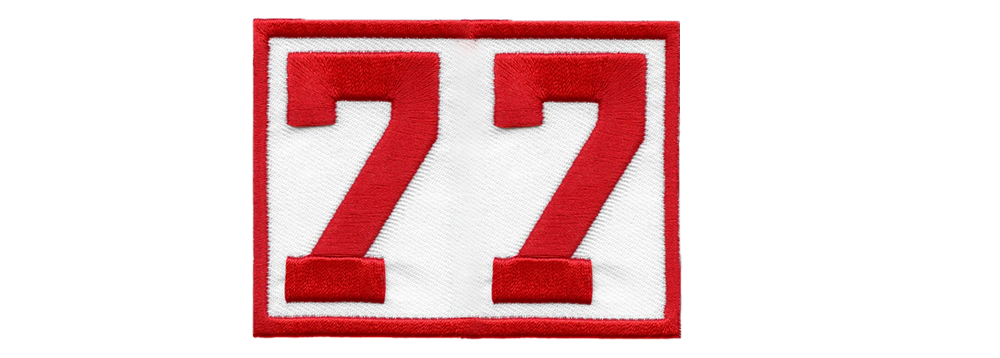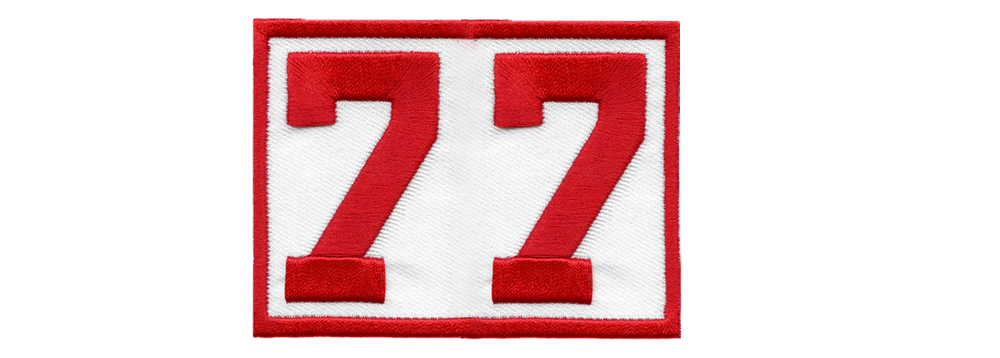It has been almost 63 years since President John F. Kennedy announced that the United States would be “landing a man on the moon and returning him safely to the Earth.” Since that day, countless books have been released on the events that transpired. One of those that stands out amongst the many is Andrew Chaikin’s A Man On The Moon: The Voyages of the Apollo Astronauts. This book captures the history of the Apollo Program from start to finish, based on Chaikin’s own interviews with people who worked on the missions, including 23 of the 24 lunar astronauts themselves. Chaikin’s work not only highlights all the individual missions but goes into intricate detail regarding what is happening behind the scenes and why. The complex workings of NASA and the Apollo missions are laid out but done in clear language so anyone can pick it up and understand. The Apollo programs and space exploration, in general, are very popular topics for readers. Still, diving in for someone who lacks previous knowledge and understanding of that area can also be incredibly intimidating. A Man On The Moon: The Voyages of the Apollo Astronauts can be read by anyone from any background who wants to know how 24 of our own got to the Moon.
Chaikin grew up like so many kids of the sixties and seventies did with the intention of exploring space and the Moon as an astronaut. Many of those people obviously drifted away from those dreams but Chaikin did not. He went to Brown University where he became trained as a planetary geologist. As he told me, “my plan was to study geology, then go to grad school for planetary, and then after that, down the road, I would apply for the astronaut program.” While in college he worked on the Viking mission at the Jet Propulsion Laboratory in Pasadena. “That was an amazing experience but also made me doubt that I wanted to be a practicing scientist,” Chaikin remembered.

Chaikin grew up like so many kids of the sixties and seventies did with the intention of exploring space and the Moon as an astronaut. Many of those people obviously drifted away from those dreams but Chaikin did not. He went to Brown University where he became trained as a planetary geologist. As he told me, “my plan was to study geology, then go to grad school for planetary, and then after that, down the road, I would apply for the astronaut program.” While in college he worked on the Viking mission at the Jet Propulsion Laboratory in Pasadena. “That was an amazing experience but also made me doubt that I wanted to be a practicing scientist,” Chaikin remembered.
Chaikin grew up like so many kids of the sixties and seventies did with the intention of exploring space and the Moon as an astronaut. Many of those people obviously drifted away from those dreams but Chaikin did not. He went to Brown University where he became trained as a planetary geologist. As he told me, “my plan was to study geology, then go to grad school for planetary, and then after that, down the road, I would apply for the astronaut program.” While in college he worked on the Viking mission at the Jet Propulsion Laboratory in Pasadena. “That was an amazing experience but also made me doubt that I wanted to be a practicing scientist,” Chaikin remembered.
After working at the magazine for about four years, Chaikin wanted to branch out into writing a book and set his sights on a place with extreme conditions—not space, but the Antarctic. "I tried to get onto one of the teams going to the Antarctic looking for meteorites," said Chaikin. After writing to one of the scientists attending the expedition, he was told that this scientist was already planning on writing a book. "That was a blessing in disguise,” he reflected, “because I don't think I would have been very happy going to the Antarctic."
These broken plans eventually led Chaikin to return to the subject he had been obsessed with ever since he was a child, Apollo. He would go on to gather information about the missions and the astronauts' experiences. "I was so captivated with the idea of telling that story better than anyone had done it, and really, there was no book that conveyed the astronauts’ experiences that I wanted to read." Even though the world would change for Chaikin, he wasn't intimidated: "I was looking forward to it...being cozy in my office working on this magnum opus."
When I first read the book I knew by the first chapter how much work had gone into acquiring all the information and sources to put together this story. Writing a book today has become almost a different activity in some ways than it was before the internet. There were no web pages with astronaut contact information, and there was no email. Chaikin wrote letters to the astronauts asking for interviews. And if he needed information about a particular mission, he had to look it up in NASA documents and histories, books by other authors, and even clippings from magazines and newspapers. “I had a whole stash of New York Times articles I had been keeping since I was a kid and I actually used some of them,” Chaikin told me.

Chaikin did encounter a few obstacles, as with moonwalker Alan Bean, whom Chaikin first met as a 12-year-old space fanatic on his first visit to the Kennedy Space Center. By the time Chaikin began researching his book, Bean had become a full time painter and didn’t want to participate in an interview about his Apollo experiences. "He was so busy with his painting, and he wanted to give all his time to that," Chaikin said. Some people were instantly ready to talk, and others took years to open up. The most well known astronaut of the entire group and the first man on the Moon, Neil Armstrong, was one of the most reluctant. Before contacting him, Chaikin had one of the other astronauts talk to Armstrong beforehand. After reaching out for the first time, Chaikin did not hear back directly from Armstrong himself but his secretary. They requested to see the sample chapter he had written before talking. "He was reluctant to speak to a person that was writing a commercial book; he was weary of being exploited, which is understandable being in his position." Chaikin said. The sample chapter was sent, but after a considerable amount of time, there was no response. "I finally, shaking with nervousness, called him, and he answered the phone," Chaikin remembered. He then asked Armstrong if he had time to read the chapter, and Neil Armstrong responded, "Not as much as I would like, but enough to be very favorably impressed."
In our talk, Chaikin mentioned that the main reasons for the project taking eight years were not just convincing all the astronauts to talk to him but also improving his writing process, "I had to rise to a level of storytelling that would live up to the amazing material that I was writing about…it was a really rugged road," he mentioned. Throughout the last year of the development of his book, Chaikin was assisted by a freelance editor who helped with the development of Chaikin's writing. "I had been doing things like repeating myself…she pointed it out, and it was great, it was like going to book-writing boot camp." Chaikin said. "It made the book much better, and I came into my own." As an example, Chaikin cited a profile of Neil Armstrong in the chapter about the preparations for Apollo 11. He writes about Armstrong's hobby of flying unpowered gliders. Chaikin wrote that piece to replace a passage about Armstrong that his editor labeled "very run-of-the-mill, Time magazine boilerplate copy," he recalled. Chaikin "swallowed hard" and put to work his extensive creative and research-able mind. He remembered a Life Magazine article that showed Armstrong and his glider. "You can just kind of click into a wavelength where you just start to hear this music and feel this flow of language, and those are beautiful moments when you can get them," Chaikin said regarding his writing process.
A Man on the Moon ended up being very well received when it was released and still is held in the highest regard of works that document space exploration and, more specifically, the Apollo missions. The book and the accounts of the stories are very well liked and appreciated, even by astronauts directly involved with many of those missions. Apollo 17 commander Gene Cernan said, "I've been there, Chaikin took me back." Even with the tremendous initial reception, A Man On The Moon: The Voyages of the Apollo Astronauts was not on the New York Times best seller list; Chaikin believes that was because of a book called Moon Shot that was co-authored by astronauts Deke Slayton's (who ran the division of the Houston Space Center that included the astronauts) and Alan Shepard, along with journalists Jay Barbree and Howard Benedict came out shortly before A Man on the Moon and quickly landed on the best seller list.
Both books were also made into in film projects. Chaikin's A Man On The Moon was the basis for HBO's mini series From the Earth to the Moon, created by Tom Hanks. The project was produced by Brian Grazer and the Apollo 13 blockbuster movie director Ron Howard. The miniseries was released over 26 years ago but Chaikin still vividly remembers how his involvement with it began. A Hollywood screenwriter friend of Chaikin's got the author an invite to see the set of Ron Howard's Apollo 13 film. There, he met the star who would leave a message on Chaikin's answering machine later the next year saying, "Andy Chaikin, this is Tom Hanks. I don't know how I got your number, but I did; it's 4 o'clock in Los Angeles…I want to talk to you about something."
Chaikin had nothing but good things to say about Hanks and the miniseries. "The spirit of that production was just beautiful. It was like they were capturing the spirit of Apollo. They just knew they were doing something important and wanted to do the best job they could." Chaikin also mentioned how fortunate he was that Hanks was the creator of the series, "I was incredibly lucky it was Tom Hanks because he had absolutely the right approach; he always felt that the true story is the best story."
Andrew Chaikin went on to write other books about Mars, Apollo, and Space in general. Chaikin loves to write music and play the guitar, bass, and keyboard but no longer does the stand up comedy that he did in his earlier days. Chaikin is not done with writing and his research, but the work that he has done throughout his career, like A Man On The Moon, will arguably be looked back on as some of the definitive historical stories regarding space exploration and the Apollo missions.


